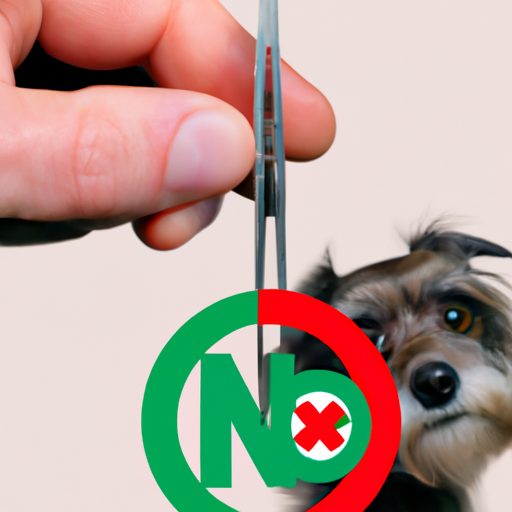“`markdown
How to Get Ticks off Dogs
As a caregiver, your role goes beyond providing food and shelter for your furry friend. It also extends to their health and wellbeing. One common health concern among dogs is ticks, which are not just pesky, but can also transmit diseases. Don’t fret, you have the power to protect your canine friend from these tiny invaders.
Understanding Ticks
Ticks are small arachnids that feed on the blood of mammals. They are not merely a nuisance – their bites can spread diseases like Lyme disease and Rocky Mountain spotted fever.
- Life cycle: Ticks go through four life stages: egg, larva, nymph, and adult.
- Habitat: They are commonly found in grassy, bushy, or wooded areas.
- Season: Ticks are most active in warm months (April-September), but can be a threat throughout the year.
Understanding ticks can help you implement effective strategies to prevent your dog from getting infested.
How to Check for Ticks
As a caregiver, you need to regularly inspect your dog for ticks, especially after spending time outdoors. Here’s how:
- Check the entire body: Run your hands over your dog’s body to feel for small bumps.
- Inspect visually: Look closely at the skin, especially under the collar, ears, toes, and armpits.
- Comb through the fur: Use a fine-toothed comb to part the fur and check the skin.
Removing Ticks from Your Dog
If you find a tick, don’t panic. Here’s a step-by-step method for safe removal:
- Prepare your supplies: Gather a pair of tweezers, gloves, rubbing alcohol, a jar with lid and antiseptic cream.
- Remove the tick: Use the tweezers to grasp the tick as close to your dog’s skin as possible and pull upwards with steady, even pressure.
- Clean the bite area: Wash the area with soap and water, then apply an antiseptic cream.
- Dispose of the tick: Submerge the tick in alcohol, put it in a sealed bag or flush it down the toilet.
- Monitor your dog: Watch for signs of illness and consult your vet if you notice anything unusual.
Preventing Tick Infestations
Prevention is the best defense against ticks. Here are some measures to consider:
- Regular inspections: Check for ticks daily, especially during tick season and after outdoor activities.
- Use tick control products: Consult your vet about suitable tick control products for your dog.
- Maintain your yard: Keep grass short and remove leaf litter to reduce tick habitats.
| Prevention Method | Frequency |
|---|---|
| Inspections | Daily |
| Tick control | Monthly |
| Yard maintenance | Weekly |
FAQs
Q: Can ticks infest my home?
A: Yes, ticks can infest homes, especially if they hitch a ride on your dog.
Q: What diseases can ticks transmit to my dog?
A: Ticks can transmit diseases like Lyme disease, anaplasmosis, and ehrlichiosis.
Q: Should I take my dog to the vet after removing a tick?
A: It’s not necessary unless your dog shows signs of illness or the tick was not fully removed.
Remember, as a caregiver, your role is essential in keeping your dog healthy. Regular checks, prompt removal of ticks, and preventive measures can help keep these pesky parasites at bay.
“`



